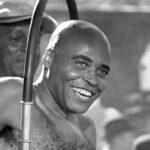The History of the World Series of Poker

The World Series of Poker is the biggest and most prestigious poker tournament in the world, attracting almost 10,000 entrants to the main event each year. It’s broadcasted to poker fans around the world through a combination of TV rights deals and online streaming, just like most other professional sports.
In the US alone, more than half a million people watch the World Series of Poker on TV. The event has had a symbiotic relationship with the game of poker as a whole. They have both benefited from growth in each other’s popularity, both becoming mainstream from relative obscurity in the space of around 30 years.
Today, poker is a major sport enjoyed by millions of people around the world. The World Series of Poker helps to generate interest in the game at an amateur level, with players going online to practice. It is far easier to start playing there, as online poker sites publish useful guides to help new players learn the rules of poker and develop their strategies.
The World Series of Poker didn’t always enjoy such popularity though. Both the competition, and the game itself, have grown significantly since the first, relatively obscure competition was held in 1970.
The Beginning
The first World Series of Poker was organized in 1970. It took place at Binion’s Horseshoe, a casino that is still operating today. Benny Binion, the owner of the casino, was the brains behind the competition. He played poker himself and wanted a way for the best players to compete against each other.
In the first year, the World Series of Poker looked very different to today. It didn’t have a “main event” to provide a focal point. Instead, it was just a collection of cash games for different versions of poker. The overall winner of the first WSOP was decided through a vote among the players, with Johnny Moss being selected.
First Main Event
The second World Series of Poker saw the introduction of the main event. This was to try and create a tournament that would be more attractive to the press, as the inaugural running saw only local Nevada news outlets cover the competition.
TV Coverage
It would be another two years before the World Series of Poker would appear on TV. Binion’s Horseshoe recorded the 1973 tournament and CBS began broadcasting parts of the event towards the end of the decade.
ESPN began broadcasting it through the 1980s and 1990s, though the coverage was nowhere near as comprehensive as it is today. The TV show also didn’t feature the “pocket cam”, so viewers couldn’t know the hands of players.
Poker Boom
The World Series of Poker started with less than a dozen players, but it had grown to several hundred by the end of the 20th century.
In 2003, ESPN upgraded its TV coverage of the World Series of Poker, with delayed-live coverage and wider coverage of more than just the final table.
This was perfect timing to capture the moment an accountant won the main event, becoming the first person to do so after qualifying through an online poker site.
This sparked a period known as the “poker boom”, which saw millions of new players flock to online poker sites around the world. It also resulted in an explosion in the number of people entering the World Series of Poker, with the number of entrants reaching a record of 8,773 just three years later.
This helped to secure the World Series of Poker as the leading poker tournament in the world, a position it has held ever since.














